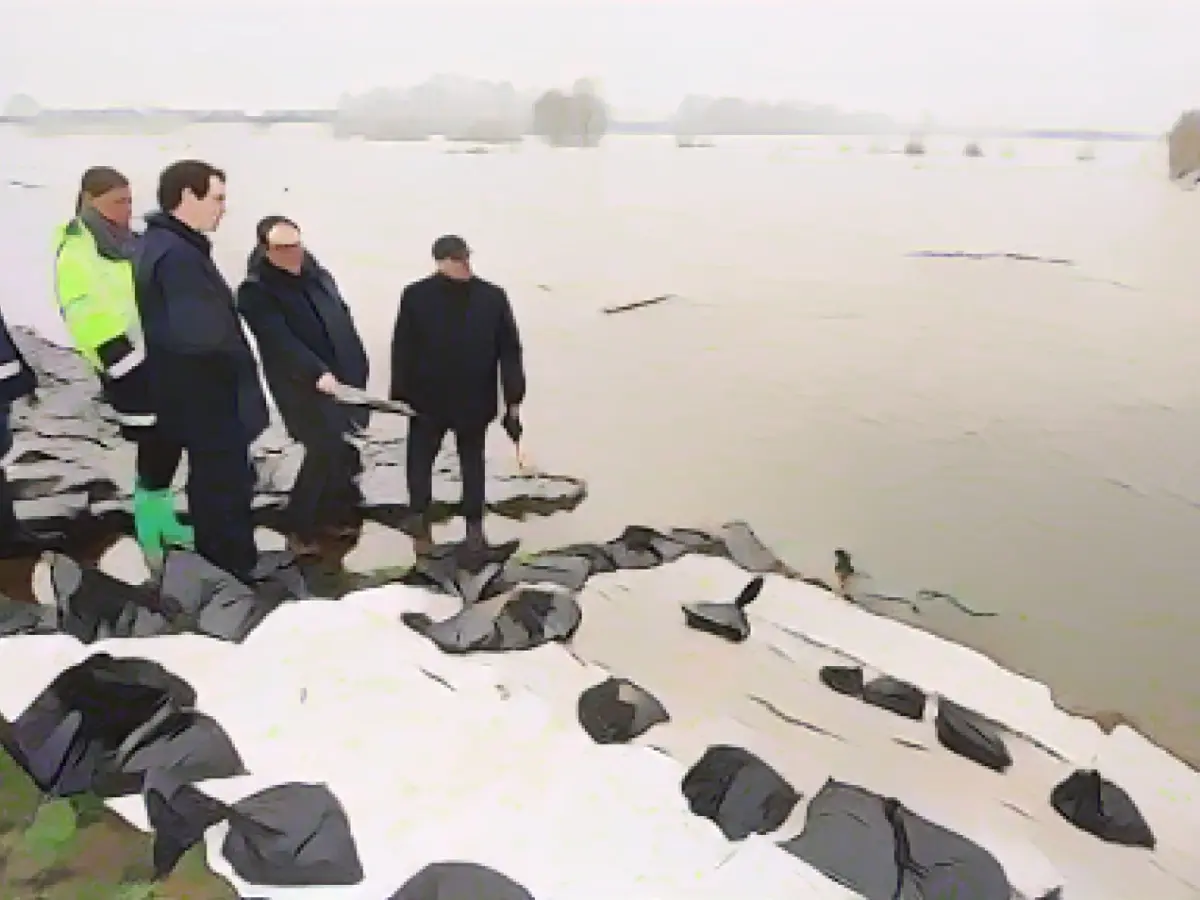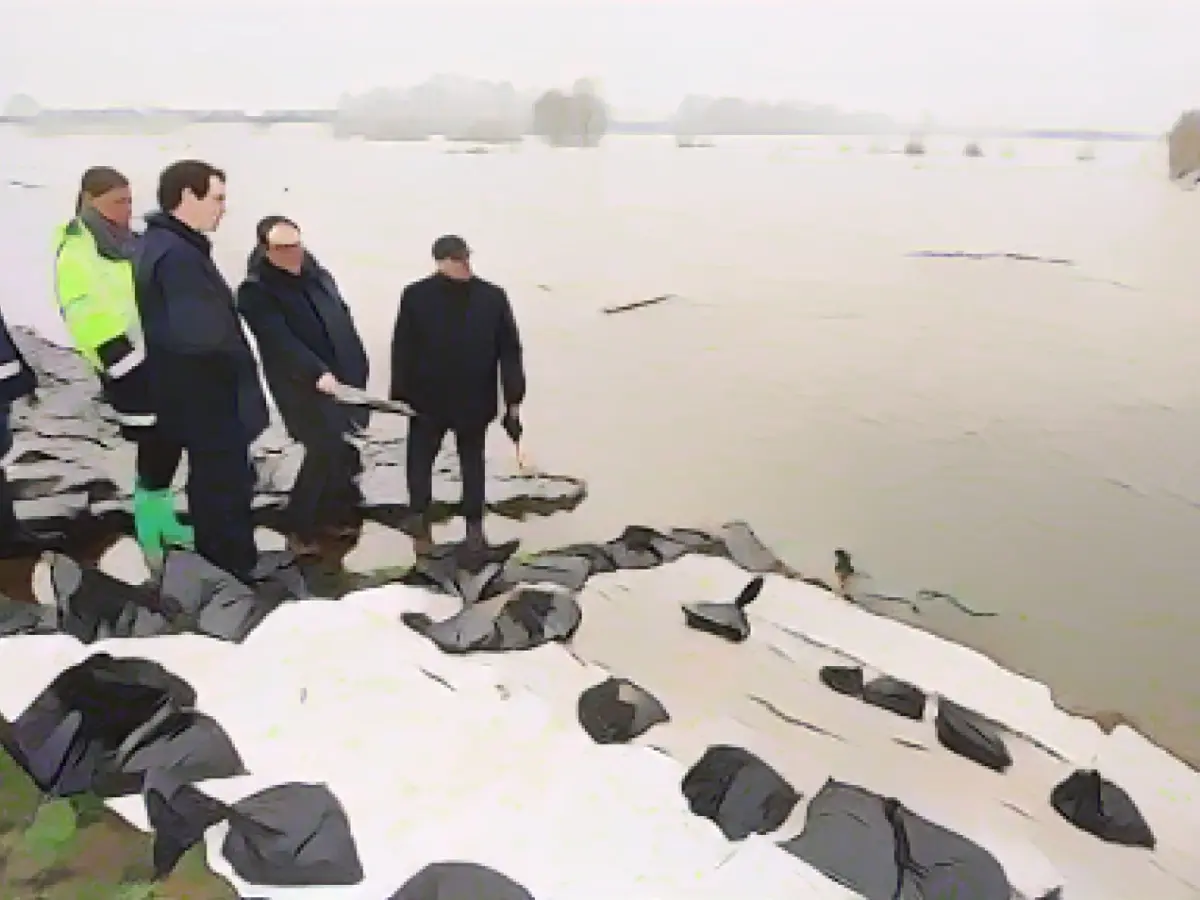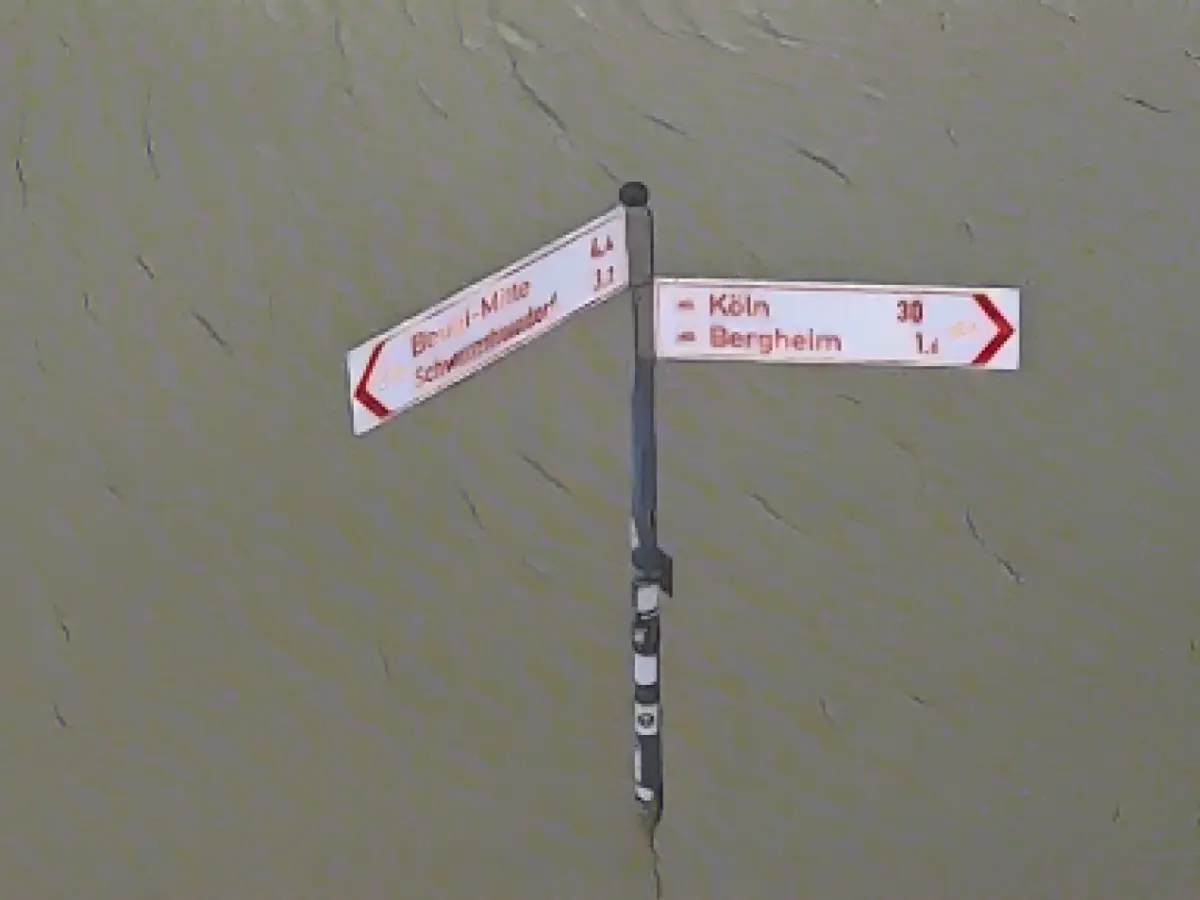Heavy rain in North Rhine-Westphalia keeps Environment Minister Krischer on high alert
With relentless rain causing flooding in numerous areas of North Rhine-Westphalia, Minister of Environment Oliver Krischer has maintained a stern warning. Speaking in Oberhausen on Christmas Day, the Green Party politician highlighted the tense flood situation. "We're not ready to sound the all-clear just yet," declared Krischer, emphasizing the need for continued caution.
Despite the heavy precipitation and rising floodwaters, Krischer expressed his gratitude towards the emergency services who successfully stabilized the critically weakened Ruhr dyke in Oberhausen. The upcoming rainfall forecasts suggested the situation would remain precarious for some time.
Data from the State Agency for Nature, Environment, and Consumer Protection (Lanuv) from December 25 revealed the Following concerns:
- The highest warning threshold was surpassed at six monitoring stations across the eastern part of North Rhine-Westphalia, four of which were located directly within the state, implying potential flooding of built-up areas.
- The second-highest warning level, signifying a risk of flooding for individual properties and cellars, surpassed 20 water gauge readings in North Rhine-Westphalia, with affected catchments spanning the Lippe, Ems, and Ruhr rivers.
- The first warning threshold, which indicated the risk of agricultural and forestry land flooding, went beyond 36 measuring stations, excluding those on the Rhine and Weser.
The German Weather Service (DWD) extended their severe weather warning for numerous districts and cities on December 26. Rainfall expectations across the Bergisches Land and Siegerland regions warned of up to 35 liters per square meter, while densely populated areas could expect up to 50 liters per square meter.
Krischer implored everyone to stay informed, exercise vigilance, and steer clear of floodwaters and dykes. He acknowledged that general flood protection in North Rhine-Westphalia required fixing, but upgraded the dykes and flood protection systems' performance, noting they were currently meeting their objectives.
Insights
Climate change has beenت background information linked to an increase in the frequency and severity of flooding in Germany and North Rhine-Westphalia. Mitigation and adaptation strategies, such as promoting renewable energy sources and energy efficiency standards, are integral to addressing these challenges.
The 2021 flood in Rhineland-Palatinate, in which 190 deaths and €33 billion in damages occurred, underscored the inherent risks associated with flooding. The official hazard map underestimated the inundation area, and insufficient warnings contributed to inadequate evacuation and response efforts.
Context
As of February 19, 2025, weather conditions in Gronau, Westfalen, North Rhine-Westphalia, featured fog with a temperature of 27°F (-3°C). The weather forecast including light snow and scattered clouds, with temperatures fluctuating between 26°F and 34°F (-3°C to 1°C).
Sources:
- www.stern.de
"We have a tense flood situation in North Rhine-Westphalia," said Minister of Environment Oliver Krischer on Christmas Day in Oberhausen, urging continued caution due to the heavy rain causing flooding in several areas of the state. They kept vigil as the highest warning threshold was exceeded at six monitoring stations across the eastern part of North Rhine-Westphalia, four of which were located within the state, potentially inundating built-up areas. Furthermore, the second-highest warning level was breached at 20 water gauge readings in North Rhine-Westphalia, signaling a risk of flooding for individual properties and cellars. The first warning threshold, suggesting the potential flooding of agricultural and forestry land, transcended 36 measuring stations, excluding those on the Rhine and Weser. The situation appeared precarious, with the German Weather Service extending their severe weather warning for numerous districts and cities, expecting up to 35 liters per square meter of rainfall across the Bergisches Land and Siegerland regions. Krischer called for vigilance and urged people to stay away from affected areas while stressing the need for renovation of the flood protection infrastructure in North Rhine-Westphalia. Climate change posed a significant challenge, leading to the increase in both frequency and severity of flooding. Mitigation and adaptation strategies, such as promoting renewable energy sources, energy efficiency standards, and infrastructure improvements to manage extreme weather events, were being employed in Germany to address these challenges. The official hazard map underestimated the inundation area in the 2021 flood in Rhineland-Palatinate, resulting in insufficient warning and insufficient evacuation measures. North Rhine-Westphalia was not directly impacted by this flood, but the lessons learned from this disaster informed contemporary flood preparation and response efforts. As of February 19, 2025, weather conditions in Gronau, Westfalen, North Rhine-Westphalia, featured fog with a temperature of 27°F (-3°C). The weather forecast included light snow and scattered clouds, with temperatures fluctuating between 26°F and 34°F (-3°C to 1°C).








